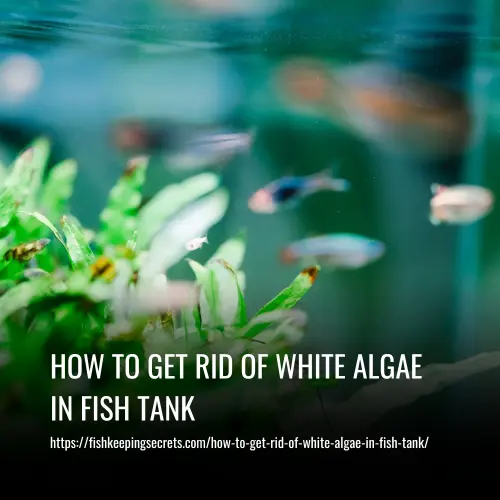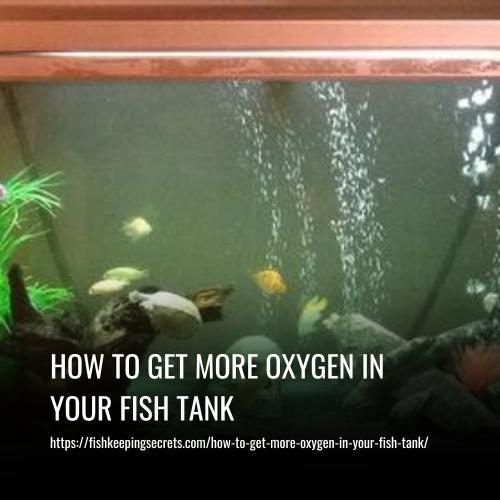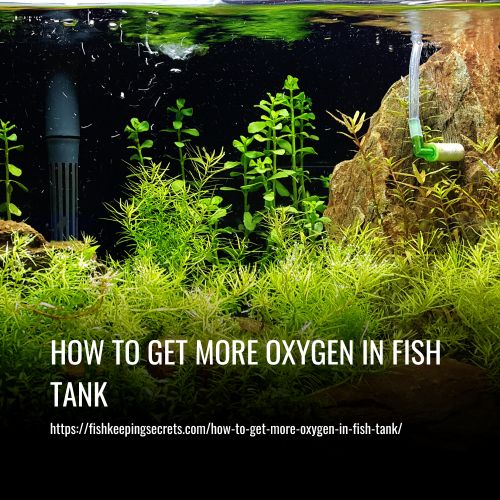For a 30-gallon tank, the general guideline is to follow the “one inch per gallon” rule. This means that you can have approximately one inch of fish per gallon of water. In the case of a 30-gallon tank, you could theoretically have thirty 1-inch fish. However, it’s important to consider factors such as the species of fish, their behavior, and their individual space requirements.
Some fish may require more space, while others may require less. It’s crucial to research the specific needs of the fish you plan to keep and ensure they have enough space to thrive in the tank.

How To Calculate How Many Fish You Can Add to a 30-Gallon Tank
When determining how many fish you can add to a 30 gallon tank, it’s important to consider factors beyond just the “one-inch per gallon” rule. Factors such as fish species, size, and the presence of plants and decorations can all impact the number of fish that can be safely housed in the tank.
While the one-inch per gallon rule suggests that a 30 gallon tank could house 15 or more 1-inch fish, this guideline is not always accurate and can lead to overcrowding and poor fish health. It’s important to research the specific needs and requirements of the fish species you intend to keep.
A more accurate approach is to use a “how many fish in a tank calculator” that takes into account the specific requirements of the fish species. These calculators consider factors such as fish size, activity level, and waste production to provide a more accurate estimate of the number of fish that can be safely housed in a given tank.
It’s also important to monitor water quality regularly and to provide proper filtration and maintenance to ensure a healthy environment for your fish. Overcrowding can lead to increased waste production and poor water quality, which can negatively impact the health and well-being of your fish.
What Affects the Number of Fish in a 30-Gallon Fish Tank
The number of fish that can be kept in a 30-gallon fish tank is influenced by several factors. These include the size and type of the fish, the space available in the tank, the amount of waste generated by the fish, the effectiveness of the filtration system, the swimming space required by the fish, the temperature requirements, and the presence of aquatic plants and decorations in the tank.
1. Size and Type of the Fish
Different fish species have different space requirements. Small fish like neon tetras can be kept in larger numbers, while larger fish like goldfish or angelfish require more space and should be kept in smaller groups.
2. Fish Tank Filter System
A proper filtration system is crucial for maintaining the water quality in the tank. Some fish require higher levels of filtration and water cleanliness, while others are more tolerant. The filter system should be adequate to handle the waste produced by the fish in order to maintain a healthy environment.
3. Amount of Waste
The amount of waste produced by the fish affects the number that can be kept in a tank. Fish that produce a lot of waste, such as plecos, may require a smaller population to prevent water pollution and maintain good water quality.
4. Swimming Space
Some fish species are more active swimmers and require more open space to swim and explore. These fish should be kept in smaller numbers to allow for sufficient swimming space and reduce stress.
5. Aquarium Heater
Fish have specific temperature requirements, and the presence of an aquarium heater is important to maintain the desired temperature range. Overcrowding the tank can lead to increased temperature and decreased oxygen levels, which can be harmful to the fish.
6. Aquatic Plants and Decorations
The presence of aquatic plants and decorations adds aesthetic appeal to the tank and can provide hiding spots for fish. However, if these elements take up too much space, it can limit the available swimming space and reduce the number of fish that can be kept.
What Number of Different Fishes Can You Put in a 30-Gallon Aquarium
The number of different fish species that can be placed in a 30-gallon aquarium depends on the size and space requirements of each species. Here are some suggestions and the recommended numbers for each variety:
1. Neon Tetra: A 30-gallon tank can comfortably accommodate around 14-18 neon tetra fish. These small schooling fish are colorful and readily available.
2. Cory Catfish: You can keep approximately six to eight cory catfish in a 30-gallon aquarium. These active swimmers require space to move around.
3. Cherry Barb: Cherry barbs are also schooling fish, so they should be kept in groups. A 30-gallon tank can house around five or six cherry barbs.
4. Dwarf Gouramis: These fish grow to about 2.5-4.5 inches in length. It is recommended to keep around eight to ten dwarf gouramis in a 30-gallon tank. They also prefer the company of at least four individuals.
5. Betta Fish: For a siamese fighting fish or betta sorority tank, you can keep approximately 6-8 female betta fish in a 30-gallon tank.
6. Guppies: The number of guppies that can live comfortably in a 30-gallon tank depends on their growth rate. On average, you can keep around 12-18 guppies, considering their size range of 0.6-2.4 inches.
7. Cichlids: The size of cichlids varies greatly, ranging from 2 inches to 3 feet. In a 30-gallon tank, it is suitable to keep 2-3 small cichlids, but larger species cannot fit in this tank size.
Please note that these are general guidelines, and it’s important to consider the specific needs and compatibility of each fish species before determining the exact number of fish for your 30-gallon aquarium.
How Much Water Is In A 30 Gallon Fish Tank
A 30-gallon fish tank holds approximately 25 gallons of water, which is equivalent to about 96 liters. The weight of the water in the tank is approximately 212 pounds. When combined with the weight of the empty tank, which is around 45 pounds for a glass tank, the total weight of the 30-gallon fish tank with water is approximately 257 pounds.
It is important to ensure that the floor where the tank is placed can support this weight, with a standard live load of 2 KN per square meter or 200 KG per square meter.
Benefits Of A 30 Gallon Fish Tank
A 30-gallon fish tank is an excellent choice for aquarium lovers of all types, and especially for beginners. The size of this aquarium gives you more freedom to select a variety of species and decorations. When it comes to pricing, a smaller tank is usually much more affordable and easier to stock than larger tanks, so if you have a limited budget then this size should be your first choice.
Maintaining a 30-gallon tank is also easier than with larger models since it only requires regular water changes (approx 20%) as well as frequent testing and the usual checks on equipment. Plus, they come in many different styles and shapes which means they can fit into almost any space.
Finally, they are ideal for those who want to challenge themselves by trying to breed their own species – making them perfect for breeder tanks despite their small size!
FAQs
Certain shark, mormyrid, and knife fish species, as well as other territorial and aggressive varieties, are not compatible with a 30-gallon water tank. Unlike guppies and neon tetras, they require more space in order to cohabitate peacefully.
When choosing a tank for goldfish, it is recommended that two or three be housed in a 30-gallon tank, although a bigger size is preferable to give the fish more space to swim. This helps keep the fish healthy and content.
Ready to give guppies and neon tetras a chance to become buddies? They can peacefully dwell in a 30-gallon tank! Just remember, they’re social little fish so be sure to introduce a minimum of two-three guppies and six neon tetras for maximum harmony.
Neon tetras are schoolers, so it is recommended to house them in groups of at minimum six fish in order for them to form their own community.
Get connected with community fish! These vibrant creatures will be perfect additions to your tank – guppies, gouramis, tetras, mollies, loaches, catfish, corys, danios, platies, plecos, rasboras, and swordtails are just a few on the list.
Conclusion
Keeping fish in a 30-gallon tank can be a great way to bring the beauty and serenity of fish into your home. There is no exact right or wrong answer when it comes to how many fish you can keep in such an aquarium, however, you should always prioritize the health and safety of any aquatic creature.
Set up your tank properly so that it has adequate filtration and decor, do your research on compatible species, and monitor ammonia levels often to ensure that all members of your tank are happy and healthy.



